General Information
Contents Page
Group 01—Safety Information
4WD Loader Safety Features 9000-01-1
Recognize Safety Information 9000-01-2
Understand Signal Words 9000-01-2
Follow Safety Instructions 9000-01-2
Avoid Injury from Rollover Accidents
- Wear Your Seat Belt Do Not Attempt to Jump Clear of Tipping Machine Serious or Fatal Crushing
Injuries Will Result
Machine Will Tip Over Faster Than You Can Jump Free 9000-01-3
Avoid Injury from Backover Accidents
- Before Moving Machine, Be Sure All Persons are Clear of Area Always Be Alert for Bystanders Moving into the Work Area. Use Horn or Other Signal to Warn
Bystanders Before Moving Machine
- When Using a Signal Person, Keep Person in View at all Times. Be Sure Signal Person is Clear Before Backing Up 9000-01-4
Avoid Injury from Rollaway Accidents
To Prevent Rollaway, Always Make Sure Machine is Properly Secured Before Leaving Operator’s Seat Death or Serious Injury May Result if
You Attempt to Mount or Stop a Moving Machine 9000-01-5
Inspect Machine 9000-01-5
Use Handholds and Steps 9000-01-6
Prevent Machine Runaway 9000-01-6
Use Seat Belt Properly 9000-01-6
Maintain Seat Belt 9000-01-7
Secondary Exits 9000-01-7
Travel Safely.................................................... 9000-01-8
Drive Machine Safely 9000-01-8
Operate Machine with Caution 9000-01-9
Operating on Slopes 9000-01-9
Carrying Loads 9000-01-10
Avoid Power Lines 9000-01-10
Beware of Exhaust Fumes 9000-01-10
Keep Riders Off Machine 9000-01-11
Handle Fuel Safely Avoid Fires 9000-01-11
Prepare for Emergencies...............................9000-01-11
Handle Starting Fluid Safely..........................9000-01-12
Clean Trash from Machine............................9000-01-12
Protect Against Flying Debris 9000-01-12
Wear Protective Clothing 9000-01-13
Protect Against Noise 9000-01-13
Handle Chemical Products Safely 9000-01-13
Use Safety Lights and Devices 9000-01-14
Keep ROPS Installed Properly 9000-01-14
Warn Others of Service Work 9000-01-15
Practice Safe Maintenance 9000-01-16
Support Machine Properly .............................9000-01-16
Remove Paint Before Welding or Heating 9000-01-17
Avoid Heating Near Pressurized Fluid Lines 9000-01-17
Avoid High-Pressure Fluids 9000-01-18
Clean the Machine Regularly 9000-01-18
Service Cooling System Safely 9000-01-19
Store Attachments Safely 9000-01-19
Dispose of Waste Properly............................9000-01-19
9000-1 TM1637 (15JAN04) 644H and 644H MH Loader 011504 PN=1
Section 9000
Page
9000
9000-2 TM1637 (15JAN04) 644H and 644H MH Loader 011504 PN=2 Contents 9000

011504 PN=9 TM1637 (15JAN04) 9000-01-1 644H and 644H MH Loader Group 01 Safety Information 4WD Loader Safety Features 9000 01 1 TX,05,JC2303 –19–09NOV98–1/1 T111699 –19 –04NOV98
Recognize Safety Information
This is a safety-alert symbol. When you see this symbol on your machine or in this manual, be alert to the potential for personal injury.

Follow recommended precautions and safe operating practices.
Understand Signal Words
A signal word DANGER, WARNING, or CAUTION is used with the safety-alert symbol. DANGER identifies the most serious hazards.
DANGER or WARNING safety signs are located near specific hazards. General precautions are listed on CAUTION safety signs. CAUTION also calls attention to safety messages in this manual.

Follow Safety Instructions
Carefully read all safety messages in this manual and on your machine safety signs. Keep safety signs in good condition. Replace missing or damaged safety signs. Be sure new equipment components and repair parts include the current safety signs. Replacemen safety signs are available from your John Deere dealer.
Learn how to operate the machine and how to use controls properly. Do not let anyone operate without instruction.
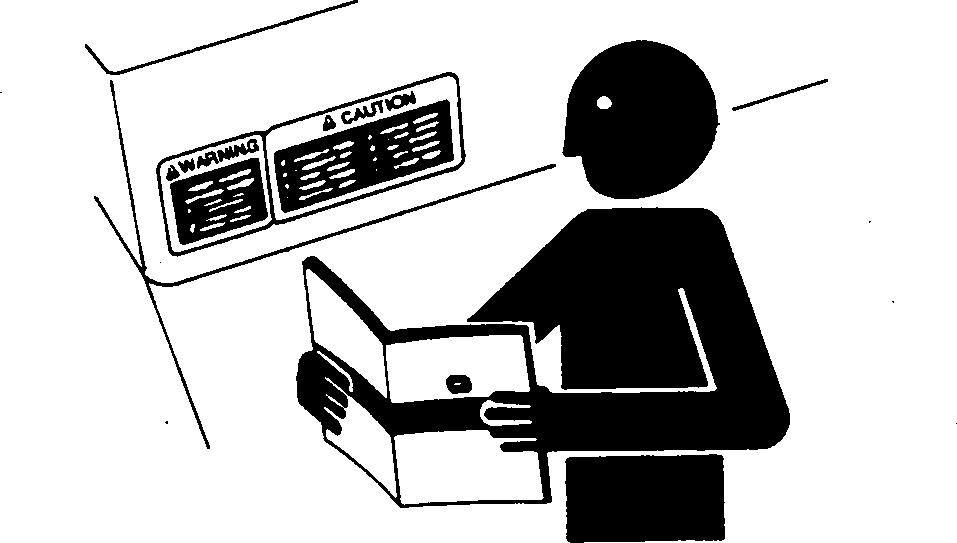
Keep your machine in proper working
condition.
Unauthorized modifications to the machine may impair the function and/or safety and affect machine life.
If you do not understand any part of this manual and need assistance, contact your John Deere dealer.
9000-01-2 TM1637 (15JAN04) 644H and 644H MH Loader 011504 PN=10 9000 01 2
DX,ALERT –19–29SEP98–1/1 Safety Information
DX,SIGNAL –19–03MAR93–1/1
DX,READ –19–03MAR93–1/1 TS201 –UN –23AUG88 TS187 –19 –30SEP88 T81389 –UN –07DEC88
Do Not Attempt to Jump Clear of Tipping
Machine Will Tip Over Faster Than You Can
To avoid rollovers:

Be careful when operating on a slope.
Avoid sharp turns.
Balance loads so weight is evenly distributed and load is stable.
Carry tools and loads close to the ground to aid visibility and lower center of gravity.
Reduce speed before turning or swinging load.
Know capacity of machine. Do not overload.
Be careful when operating at the edge of an excavation, trench, or drop-off, and loading or unloading from a trailer.
Read and understand the operating instructions in this operator’s manual.
Safety Information 9000-01-3 TM1637 (15JAN04) 644H and 644H MH Loader 011504 PN=11 T7242EA –19 –22FEB90
from
-------------------------------Wear Your Seat Belt --------------------------------
Avoid Injury
Rollover Accidents
Machine
--------------------------------
Serious or Fatal Crushing Injuries Will Result
9000 01 3
Jump Free
TX,05,DH1525 –19–21JUN91–1/1
Avoid Injury from Backover Accidents
------------------------------------
Before Moving Machine, Be Sure All Persons are Clear of Area
------------------------------------
Always Be Alert for Bystanders Moving into the Work Area. Use Horn or Other Signal to Warn Bystanders Before Moving Machine
------------------------------------
When Using a Signal Person, Keep Person in View at all Times. Be Sure Signal Person is Clear Before Backing Up

To avoid backover accidents:
Always look around before you back up. Be sure that everyone is in the clear.
Keep bystanders away from pivot area of an articulated machine.
Keep reverse warning alarm in working condition, if equipped.
Use a signal person when backing up if view is obstructed. Always keep signal person in view.
Learn the meaning of all flags, signs, and markings used on the job, and who has the responsibility for signaling.
Keep windows, mirrors, and lights clean and in good condition.
Dust, heavy rain, fog, etc., can reduce visibility. As visibility decreases, reduce speed and use proper lighting.
Read and understand the operating instructions in this operator’s manual.
Safety Information 9000-01-4 TM1637 (15JAN04) 644H and 644H MH Loader 011504 PN=12 9000 01 4 TX,05,DH1573 –19–18MAR91–1/1
T7241AY –UN –21FEB90
Avoid Injury from Rollaway Accidents
To Prevent Rollaway, Always Make Sure Machine is Properly Secured Before Leaving Operator’s Seat
Death or Serious Injury May Result if You Attempt to Mount or Stop a Moving Machine

To avoid rollaways:
Select level ground when possible to park machine.
Move transmission control lever to neutral "N", engage neutral lock, and push park brake switch to ON.
Lower all equipment to ground.
Stop the engine.
Block all wheels if you must park on a grade. Position machine to prevent rolling.
Park a reasonable distance from other machines.
Read and understand the operating instructions in this operator’s manual.

Inspect Machine
Inspect your machine carefully each day by walking around it before you start it. (See Pre-Start Inspection Chapter.)
Safety Information 9000-01-5 TM1637 (15JAN04) 644H and 644H MH Loader 011504 PN=13 T7241AZ –UN –21FEB90
------------------------------------
------------------------------------
9000 01 5
TX,05,JC1888 –19–18FEB97–1/1
T82,BHSA,CL –19–14MAR90–1/1 T6607AQ –UN –18OCT88
Use Handholds and Steps
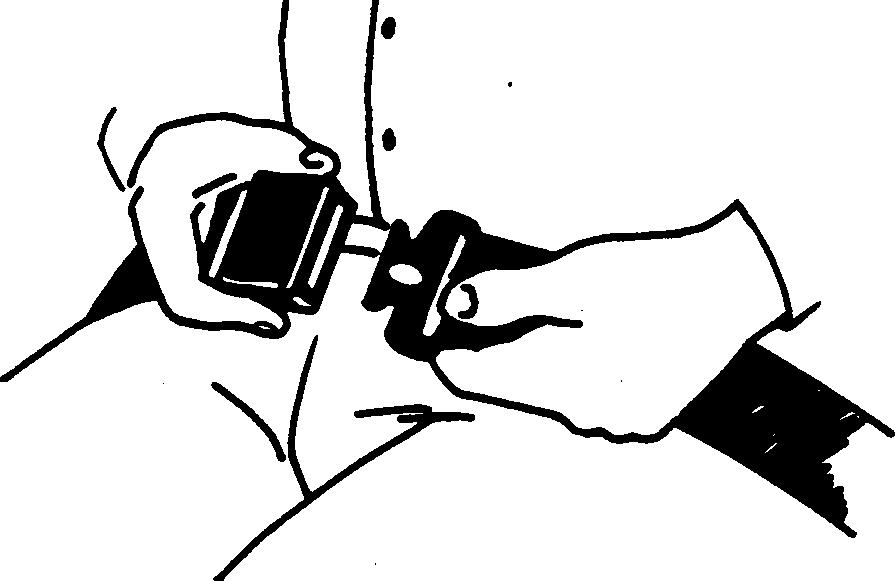
Falling is one of the major causes of personal injury.
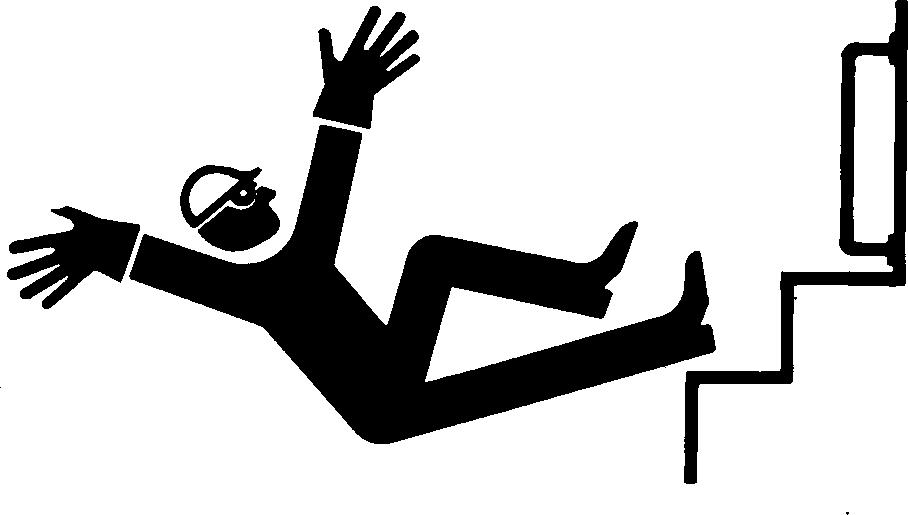
When you get on and off the machine, always maintain a three point contact with the steps and handrails, and face the machine. Do not use the steering wheel or any controls as handholds.
Never jump on or off the machine. Never mount or dismount a moving machine.
Be careful of slippery conditions on platforms, steps, and handrails when leaving the machine.
Prevent Machine Runaway
Avoid possible injury or death from a runaway machine.
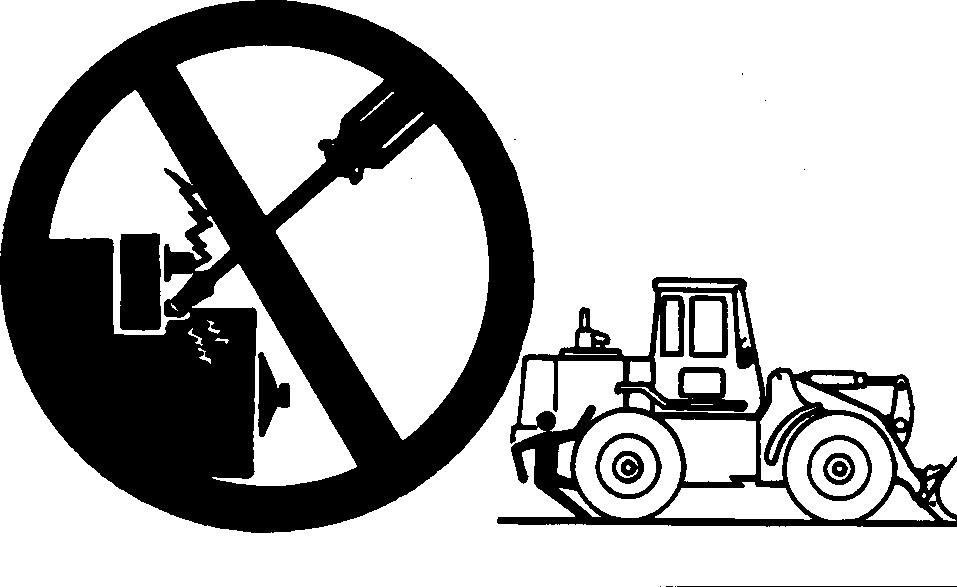
DO NOT start engine by shorting across starter terminals. Machine will start in gear if normal circuitry is bypassed.
Never start engine while standing on ground. Start engine only from operator’s seat with transmission control lever locked in neutral and park brake engaged.
Use Seat Belt Properly
Overturns may occur if proper operating instructions are not followed.
Use your seat belt.
Safety Information 9000-01-6 TM1637 (15JAN04) 644H and 644H MH Loader 011504 PN=14 9000 01 6
TX,05,DH553 –19–18MAR91–1/1
TX,05,DH2281 –19–06OCT92–1/1
TX,05,JC1044 –19–12JAN96–1/1 TS175 –UN –23AUG88 T6642EB –UN –20OCT88 T6981AN –UN –15JUN89
Maintain Seat Belt
It is important to use the seat belt on ROPS equipped machines to minimize the chance of injury from an accident such as an overturn. Keep the seat belt in good condition.
The complete seat belt assembly should be replaced after three years of usage, regardless of appearance.
Between replacement intervals:
Carefully examine buckle, webbing, and attaching hardware.
Be sure that the retractor, if equipped, locks to prevent belt extension after latching buckle.
Be sure that attaching hardware is in place. Tighten, if necessary.
Replace the seat belt if it does not operate properly, or if it is damaged, worn, or deteriorated.
Secondary Exits
Machines equipped with cabs are equipped with secondary exits. For additional secondary exit information, see “Opening Side Window/Secondary Exit” in chapter 10 of this manual.
Safety Information 9000-01-7 TM1637 (15JAN04) 644H and 644H MH Loader 011504 PN=15
TX,05,JC1753 –19–09DEC96–1/1
9000 01 7
TX,05,JC242 –19–03MAR95–1/1
Know the location of bystanders before moving the machine.
Always keep the reverse warning alarm in working condition. It warns people when the machine starts to move in reverse.
Use a signal person when moving the machine in congested areas. Coordinate hand signals before starting the machine.
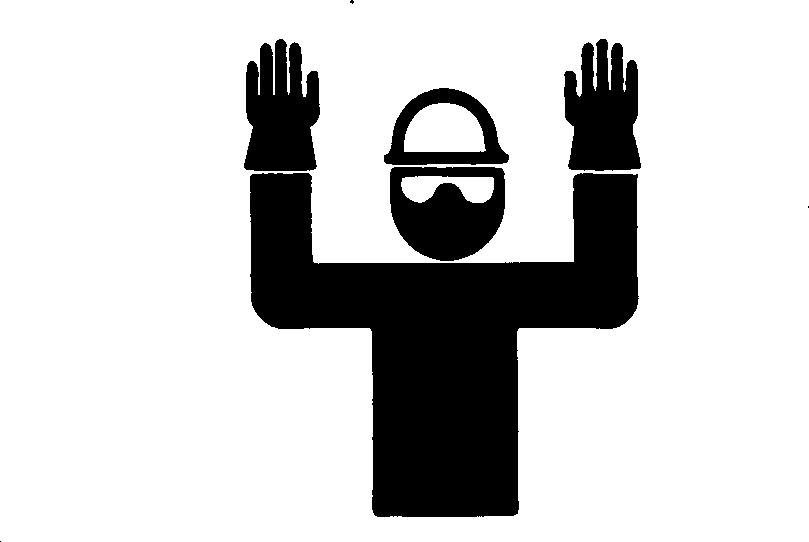
Drive Machine Safely
Walk around machine to clear all persons from area of operation and machine movement.
Always check area to rear before shifting to reverse.
Drive carefully in congested areas, over rough ground, near ditches for excavations, and on slopes or curves. Keep machine in gear when going down hills.
Use accessory lights and devices to warn operators of other vehicles.
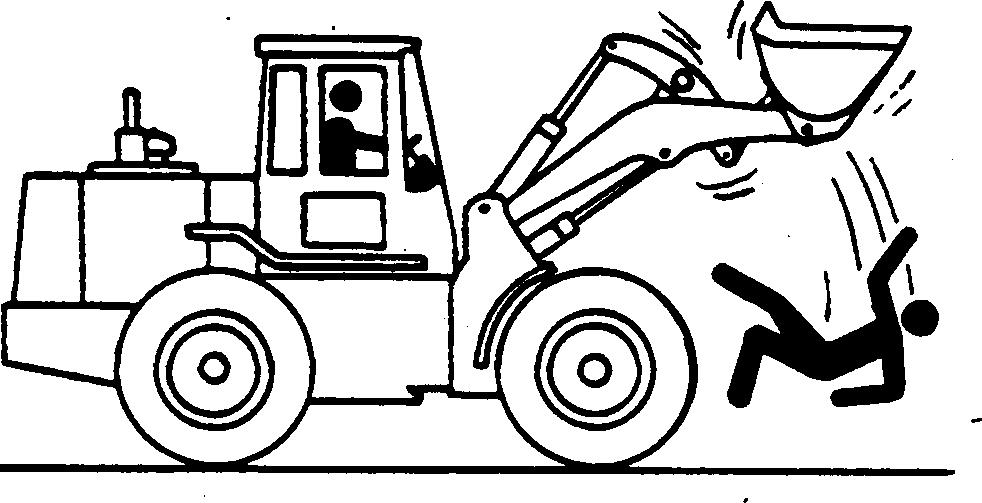
Safety Information 9000-01-8 TM1637 (15JAN04) 644H and 644H MH Loader 011504 PN=16 9000 01 8
Travel Safely
TX,05,DH496 –19–02AUG89–1/1
TX,05,DH1931 –19–21JUN91–1/1 T6582AS –UN –25OCT88 T6964AD –UN –20DEC88
Operate Machine with Caution

Check location of cables, gas lines, and water mains before digging.
Keep loading area smooth.
Never lower a loaded bucket with the boom and bucket control lever in the float position.
Increase the power gradually when pulling a heavy load or when driving out of a ditch or excavation.
Operating on Slopes
Avoid side slope travel whenever possible. Drive up slope in forward and down in reverse. The danger of tipping is always present.
In steep slope operation, do not allow engine to overspeed. Select low gear speed before starting down slope.
The grade of the slope you should attempt will be limited by such factors as ground condition, and load being handled.
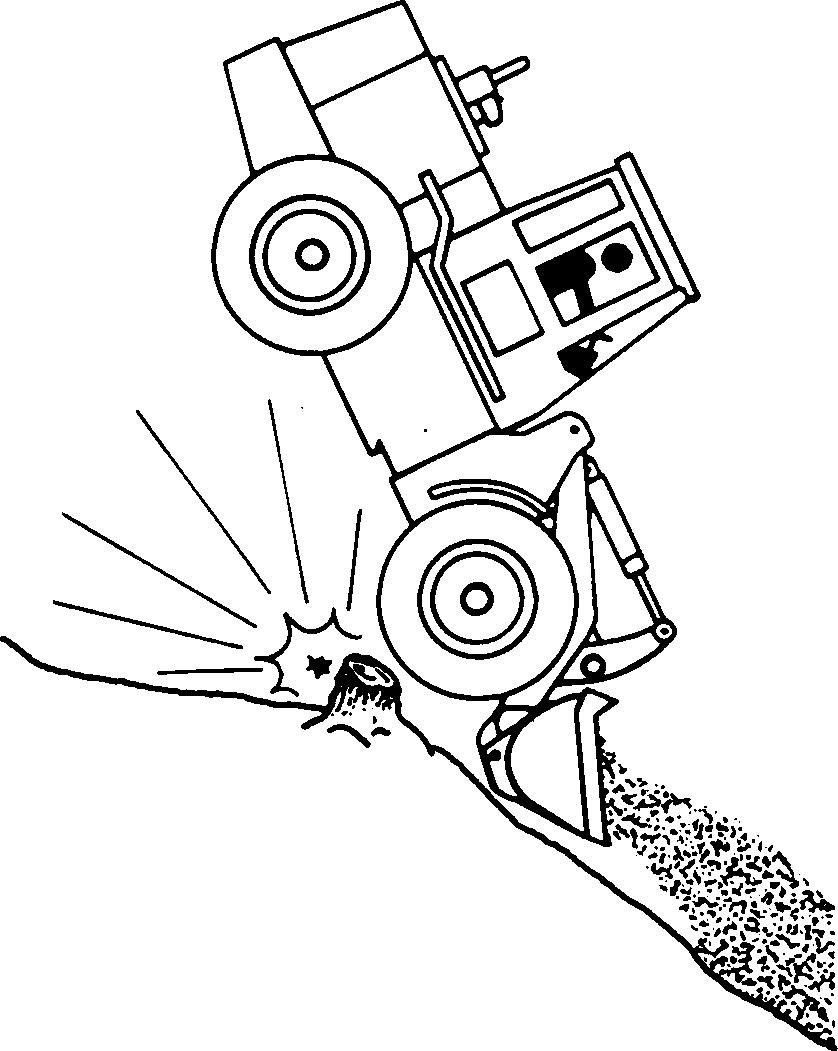
Safety Information 9000-01-9 TM1637 (15JAN04) 644H and 644H MH Loader 011504 PN=17 T6642EF –UN –18OCT88
9000 01 9
TX,05,DH1932 –19–06JUN91–1/1
TX,05,RR,171 –19–27APR89–1/1 T7050AB –UN –03AUG89
Carrying Loads
Carry loader bucket as low as possible for better stability and visibility.
Handle only those loads which are properly arranged. Do not overload.
Do not start, stop, or turn quickly when transporting a load.
Do not change forward or reverse directions quickly when carrying a load.
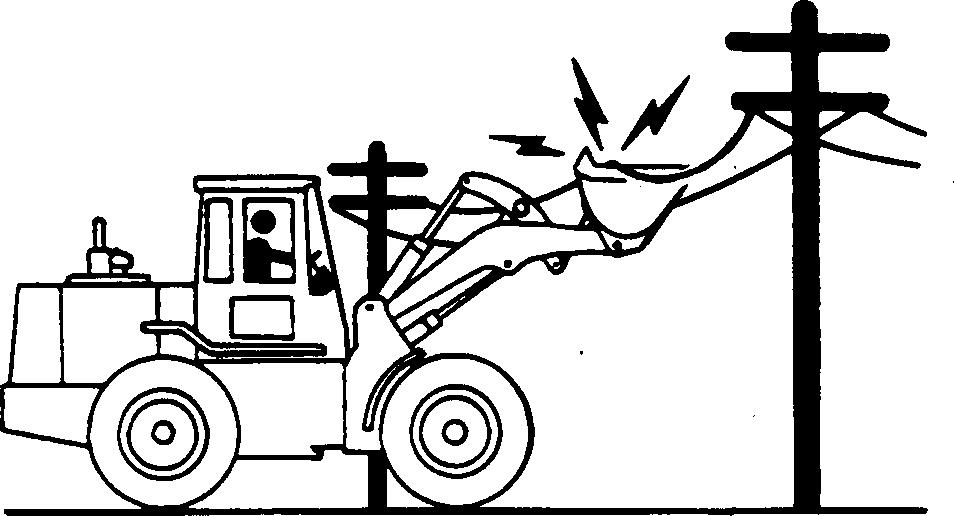
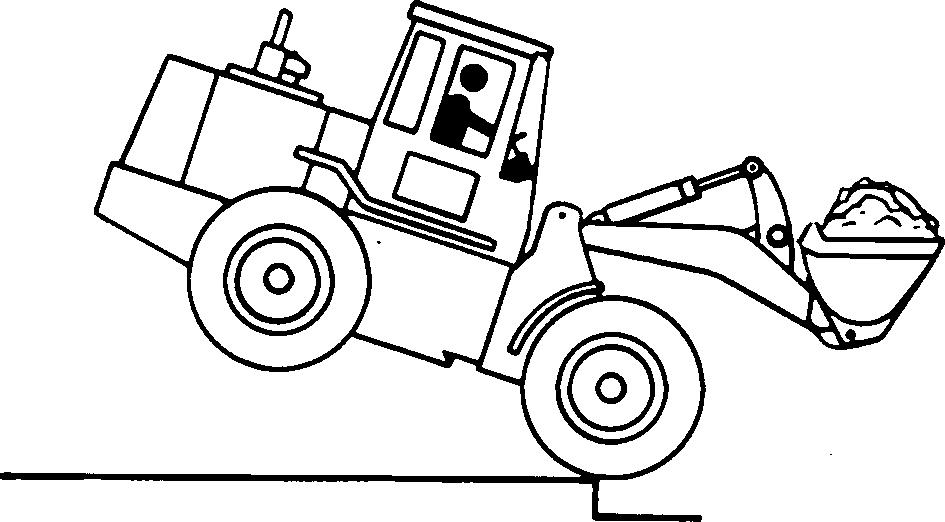
Avoid Power Lines
Serious injury or death can result from contact with electric lines.
Never move any part of the machine or load closer to electric line than 3 m (10 ft) plus twice the line insulator length.
Beware of Exhaust Fumes
Prevent asphyxiation. Engine exhaust fumes can cause sickness or death.
If you must operate in a building, be sure there is adequate ventilation. Either use an exhaust pipe extension to remove the exhaust fumes or open doors and windows to bring enough outside air into the area.
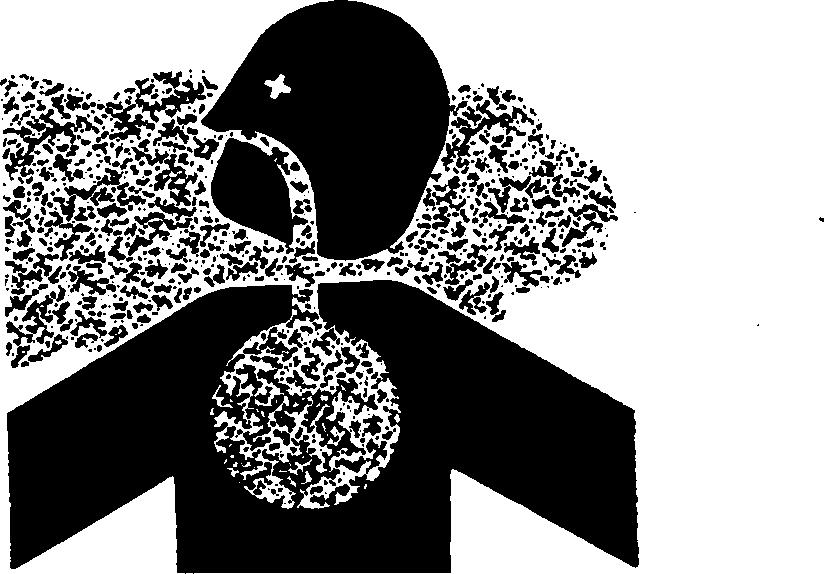
Safety Information 9000-01-10 TM1637 (15JAN04) 644H and 644H MH Loader 011504 PN=18 9000 01 10
TX,05,RR,172 –19–03JUN92–1/1
02T,05,J18 –19–06JUN91–1/1
TX,DH,2 –19–09FEB89–1/1 T6458AO –UN –18OCT88 T6642EG –UN –20JUN89 T7050AA –UN –03AUG89
Keep Riders Off Machine
Only allow the operator on the machine. Keep riders off. Riders on machine are subject to injury such as being struck by foreign objects and being thrown off of the machine. Riders also obstruct the operator’s view resulting in the machine being operated in an unsafe manner.

Handle Fuel Safely—Avoid Fires
Handle fuel with care: it is highly flammable. Do not refuel the machine while smoking or when near open flame or sparks.
Always stop engine before refueling machine. Fill fuel tank outdoors.
Prevent fires by keeping machine clean of accumulated trash, grease, and debris. Always clean up spilled fuel.
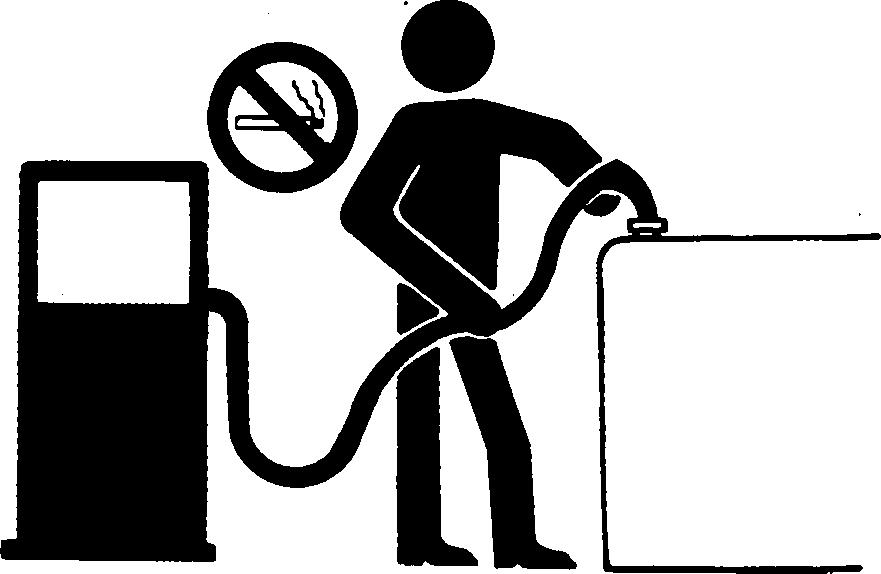
Prepare for Emergencies
Be prepared if a fire starts.
Keep a first aid kit and fire extinguisher handy. Keep emergency numbers for doctors, ambulance service, hospital, and fire department near your telephone.
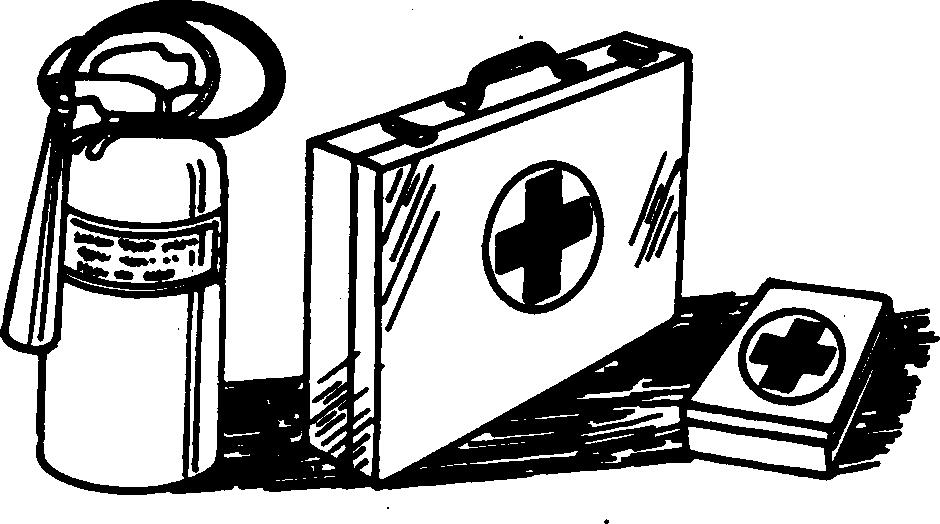
Safety Information 9000-01-11
(15JAN04) 644H and 644H MH Loader 011504 PN=19 TS290 –UN –23AUG88
TM1637
9000 01 11
DX,RIDER –19–03MAR93–1/1
DX,FIRE1 –19–03MAR93–1/1
DX,FIRE2 –19–03MAR93–1/1 TS291 –UN –23AUG88 TS202 –UN –23AUG88
Handle Starting Fluid Safely
Starting fluid is highly flammable. Keep all sparks and flame away when using it. Keep starting fluid away from batteries and cables. Remove container from machine if engine does not need starting fluid.
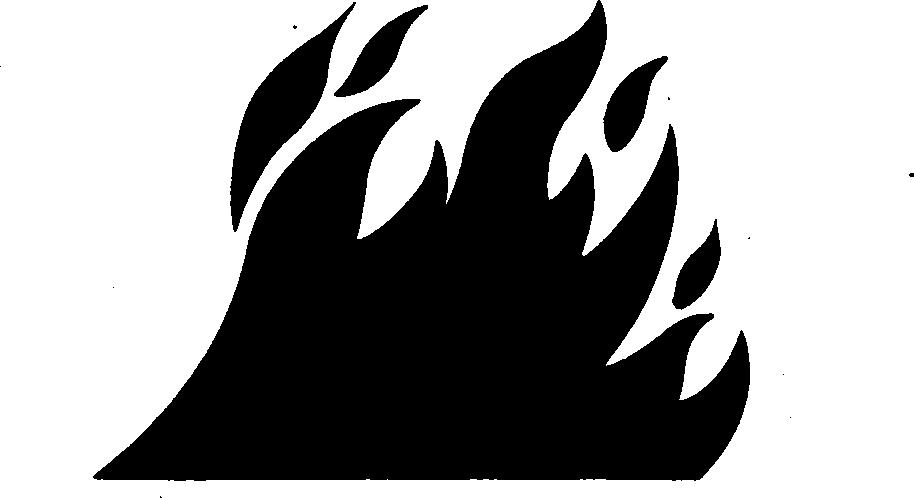
To prevent accidental discharge when storing the pressurized can, keep the cap on the container, and store in a cool, protected location.
Do not incinerate or puncture a starting fluid container.
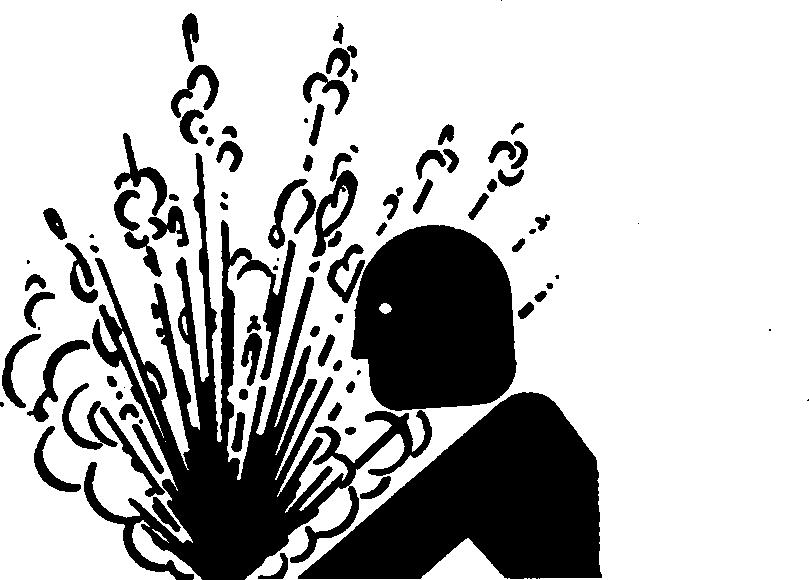
Clean Trash from Machine
Keep engine compartment, radiator, batteries, hydraulic lines, fuel tank, and operator’s station clean.
Temperature in engine compartment may go up immediately after engine is stopped. BE ON GUARD FOR FIRES DURING THIS PERIOD.
Open access door(s) to cool the engine faster, and clean engine compartment.
Protect Against Flying Debris
When you drive connecting pins in or out, guard against injury from flying pieces of metal or debris; wear goggles or safety glasses.
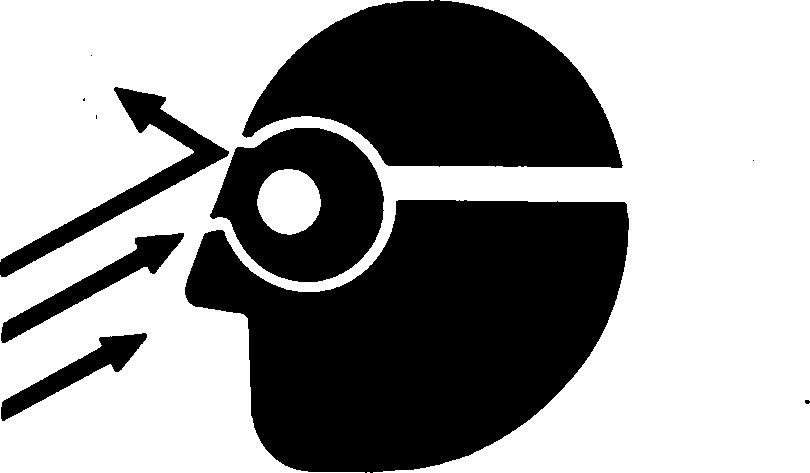
Safety Information
(15JAN04) 644H and 644H MH Loader 011504 PN=20 9000 01 12
9000-01-12 TM1637
TX,05,FF2281 –19–22FEB91–1/1
02T,05,J33 –19–13JUN00–1/1
02T,05,J45 –19–30MAY90–1/1 T6642DK –UN –18OCT88 TS227 –UN –23AUG88 T6464AV –UN –18OCT88
Wear Protective Clothing
Wear close fitting clothing and safety equipment appropriate to the job.

Operating equipment safely requires the full attention of the operator. Do not wear radio or music headphones while operating machine.
Protect Against Noise
Prolonged exposure to loud noise can cause impairment or loss of hearing.

Wear a suitable hearing protective device such as earmuffs or earplugs to protect against objectionable or uncomfortable loud noises.
Handle Chemical Products Safely
Direct exposure to hazardous chemicals can cause serious injury. Potentially hazardous chemicals used with John Deere equipment include such items as lubricants, coolants, paints, and adhesives.
A Material Safety Data Sheet (MSDS) provides specific details on chemical products: physical and health hazards, safety procedures, and emergency response techniques.
Check the MSDS before you start any job using a hazardous chemical. That way you will know exactly what the risks are and how to do the job safely. Then follow procedures and recommended equipment.
(See your John Deere dealer for MSDS’s on chemical products used with John Deere equipment.)
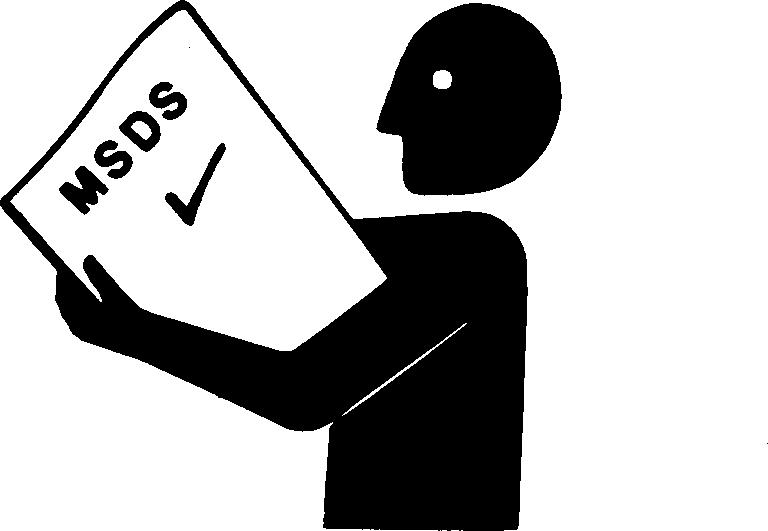
Safety Information 9000-01-13 TM1637 (15JAN04) 644H and 644H MH Loader 011504 PN=21 TS206 –UN –23AUG88
9000 01 13
DX,WEAR2 –19–03MAR93–1/1
DX,NOISE –19–03MAR93–1/1
DX,MSDS,NA –19–03MAR93–1/1 TS1132 –UN –26NOV90 TS207 –UN –23AUG88
Use Safety Lights and Devices
Operators of machines that travel below normal highway speeds should take special precautions to avoid collision with other vehicles.
Before driving on public roads, check state and local laws that may apply to tractors, self-propelled machines, and towed equipment. Additional lights, mirrors, SMV emblems, or reflectors may be required.
Install and use all safety lights and devices necessary to assure safe operation and local compliance. Keep these safety items in good condition. Replace missing or damaged parts immediately.
Keep ROPS Installed Properly
A damaged roll-over protective structure (ROPS) should be replaced, not reused.
The protection offered by ROPS will be impaired if ROPS is subjected to structural damage, is involved in an overturn incident, or is in any way altered by welding, bending, drilling, or cutting.
If ROPS was loosened or removed for any reason, inspect it carefully before operating the machine again.
To maintain the ROPS:
• Replace missing hardware using correct grade hardware.
• Check hardware torque.
• Check isolation mounts for damage, looseness or wear; replace them if necessary.
• Check ROPS for cracks or physical damage.
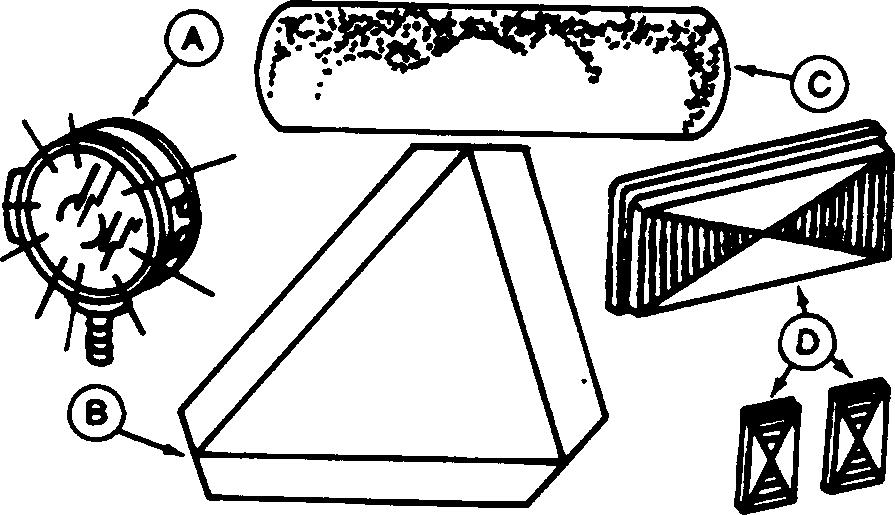
Safety Information 9000-01-14 TM1637 (15JAN04) 644H and 644H MH Loader 011504 PN=22
TX,05,DH1846 –19–14MAY91–1/1
A Lights
Slow Moving Vehicle Emblem
Reflector Tape D Reflectors TX,05,DH1729 –19–26JAN91–1/1 9000 01 14 N36564 –UN –10FEB89
B
C
Warn Others of Service Work
Unexpected machine movement can cause serious injury. Before performing any work on the machine, attach a "DO NOT OPERATE" tag to the steering wheel.

Safety Information 9000-01-15 TM1637 (15JAN04) 644H and 644H MH Loader 011504 PN=23 T7447AO –19 –22APR91
9000 01 15
TX,05,DH1820 –19–14MAY91–1/1
Understand service procedure before doing work. Keep area clean and dry.
Never lubricate, service, or adjust machine while it is moving. Keep hands, feet , and clothing from power-driven parts. Disengage all power and operate controls to relieve pressure. Lower equipment to the ground. Stop the engine. Remove the key. Allow machine to cool.
Securely support any machine elements that must be raised for service work.
Keep all parts in good condition and properly installed. Fix damage immediately. Replace worn or broken parts. Remove any buildup of grease, oil, or debris.
On self-propelled equipment, disconnect battery ground cable (-) before making adjustments on electrical systems or welding on machine.
On towed implements, disconnect wiring harnesses from tractor before servicing electrical system components or welding on machine.
Support Machine Properly
Always lower the attachment or implement to the ground before you work on the machine. If the work requires that the machine or attachment be lifted, provide secure support for them. If left in a raised position, hydraulically supported devices can settle or leak down.
Do not support the machine on cinder blocks, hollow tiles, or props that may crumble under continuous load. Do not work under a machine that is supported solely by a jack. Follow recommended procedures in this manual.
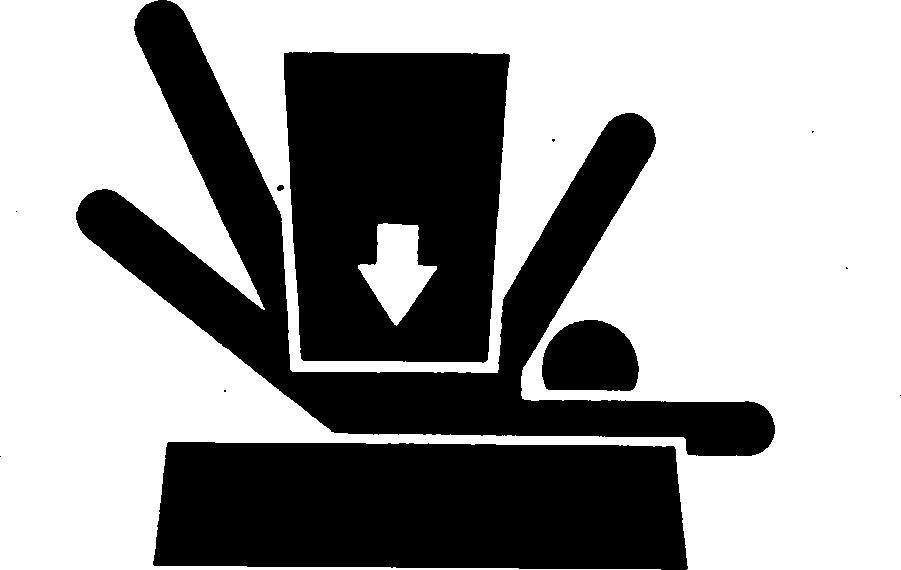
When implements or attachments are used with a machine, always follow safety precautions listed in the implement or attachment operator’s manual.
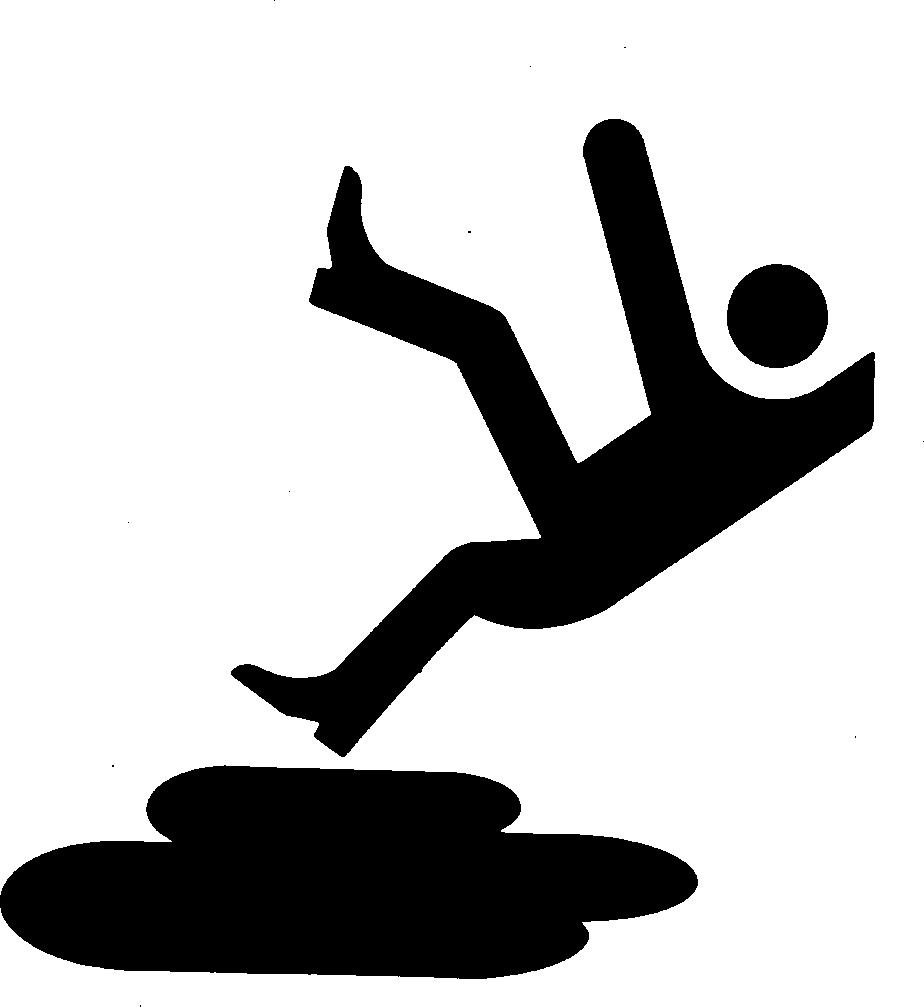
Safety Information 9000-01-16 TM1637 (15JAN04) 644H and 644H MH Loader 011504 PN=24 9000 01 16
Practice Safe Maintenance
DX,SERV –19–17FEB99–1/1
DX,LOWER –19–24FEB00–1/1 TS229 –UN –23AUG88 TS218 –UN –23AUG88
Remove Paint Before Welding or Heating
Avoid potentially toxic fumes and dust.
Hazardous fumes can be generated when paint is heated by welding, soldering, or using a torch.
Remove paint before heating:
• Remove paint a minimum of 100 mm (4 in.) from area to be affected by heating. If paint cannot be removed, wear an approved respirator before heating or welding.
• If you sand or grind paint, avoid breathing the dust. Wear an approved respirator.
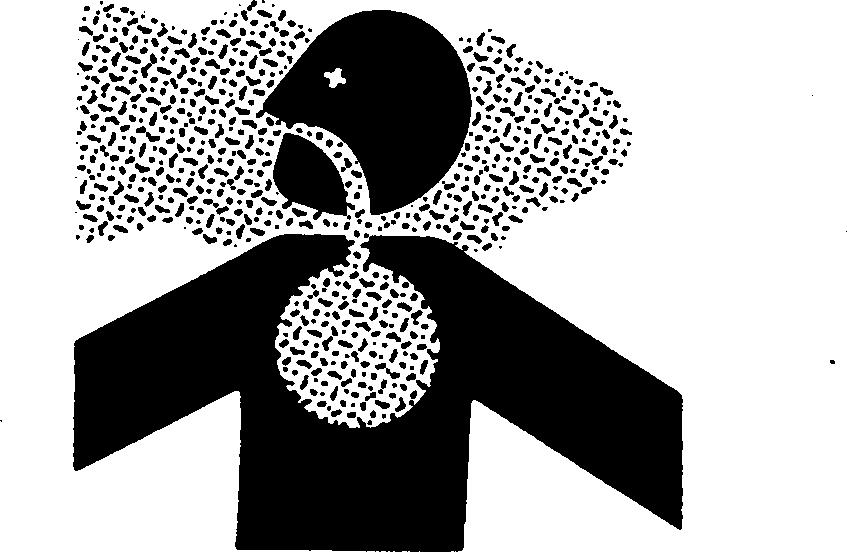
• If you use solvent or paint stripper, remove stripper with soap and water before welding. Remove solvent or paint stripper containers and other flammable material from area. Allow fumes to disperse at least 15 minutes before welding or heating.
Do not use a chlorinated solvent in areas where welding will take place.
Do all work in an area that is well ventilated to carry toxic fumes and dust away.
Dispose of paint and solvent properly.
Avoid Heating Near Pressurized Fluid Lines
Flammable spray can be generated by heating near pressurized fluid lines, resulting in severe burns to yourself and bystanders. Do not heat by welding, soldering, or using a torch near pressurized fluid lines or other flammable materials. Pressurized lines can be accidentally cut when heat goes beyond the immediate flame area.
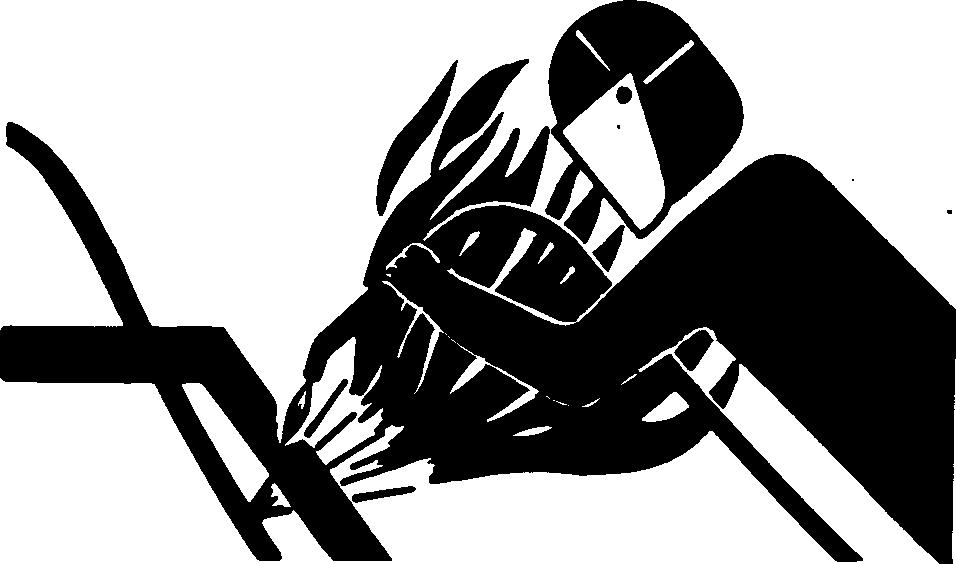
Safety Information 9000-01-17 TM1637 (15JAN04) 644H and 644H MH Loader 011504 PN=25 TS220 –UN –23AUG88
9000 01 17
DX,PAINT –19–24JUL02–1/1
DX,TORCH –19–03MAR93–1/1 TS953 –UN –15MAY90
Avoid High-Pressure Fluids
Escaping fluid under pressure can penetrate the skin causing serious injury.
Avoid the hazard by relieving pressure before disconnecting hydraulic or other lines. Tighten all connections before applying pressure.

Search for leaks with a piece of cardboard. Protect hands and body from high pressure fluids.
If an accident occurs, see a doctor immediately. Any fluid injected into the skin must be surgically removed within a few hours or gangrene may result. Doctors unfamiliar with this type of injury should reference a knowledgeable medical source. Such information is available from Deere & Company Medical Department in Moline, Illinois, U.S.A.
Clean the Machine Regularly
Remove any grease, oil, fuel, or debris build-up to avoid possible injury or machine damage.
High pressure washing [greater than 1379 kpa (13.8 bar) (200 psi)] can damage freshly painted finishes. Paint should be allowed to air dry for 30 days minimum after receipt of machine before cleaning with high pressure. Use low pressure wash operations until 30 days have elapsed.
Do not spray oil cooler fins at an angle. Fins may bend.
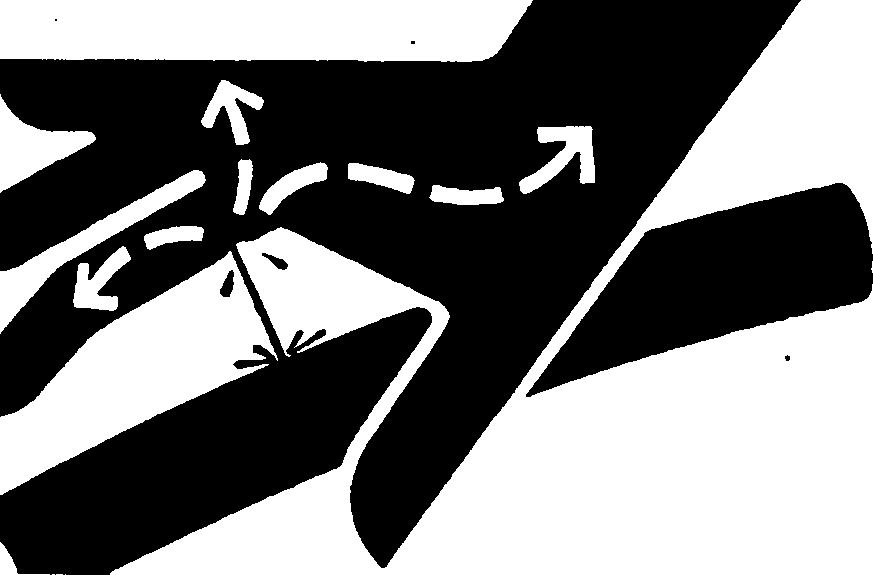
Safety Information 9000-01-18 TM1637 (15JAN04) 644H and 644H MH Loader 011504 PN=26 9000 01 18
DX,FLUID –19–03MAR93–1/1
TX,05,FF2787 –19–27JUL94–1/1 X9811 –UN –23AUG88 T6642EJ –UN –18OCT88
Service Cooling System Safely
Explosive release of fluids from pressurized cooling system can cause serious burns.

Shut off engine. Only remove filler cap when cool enough to touch with bare hands. Slowly loosen cap to first stop to relieve pressure before removing completely.
Store Attachments Safely
Stored attachments such as dual wheels, cage wheels, and loaders can fall and cause serious injury or death.
Securely store attachments and implements to prevent falling. Keep playing children and bystanders away from storage area.

Dispose of Waste Properly
Improperly disposing of waste can threaten the environment and ecology. Potentially harmful waste used with John Deere equipment include such items as oil, fuel, coolant, brake fluid, filters, and batteries.
Use leakproof containers when draining fluids. Do not use food or beverage containers that may mislead someone into drinking from them.
Do not pour waste onto the ground, down a drain, or into any water source.
Air conditioning refrigerants escaping into the air can damage the Earth’s atmosphere. Government regulations may require a certified air conditioning service center to recover and recycle used air conditioning refrigerants.
Inquire on the proper way to recycle or dispose of waste from your local environmental or recycling center, or from your John Deere dealer.

Safety Information 9000-01-19 TM1637 (15JAN04) 644H and 644H MH Loader 011504 PN=27 TS281 –UN –23AUG88
9000 01 19
DX,RCAP –19–04JUN90–1/1
DX,STORE –19–03MAR93–1/1
DX,DRAIN –19–03MAR93–1/1 TS1133 –UN –26NOV90 TS219 –UN –23AUG88
Safety Information 9000-01-20 TM1637 (15JAN04) 644H and 644H MH Loader 011504 PN=28 9000 01 20









































